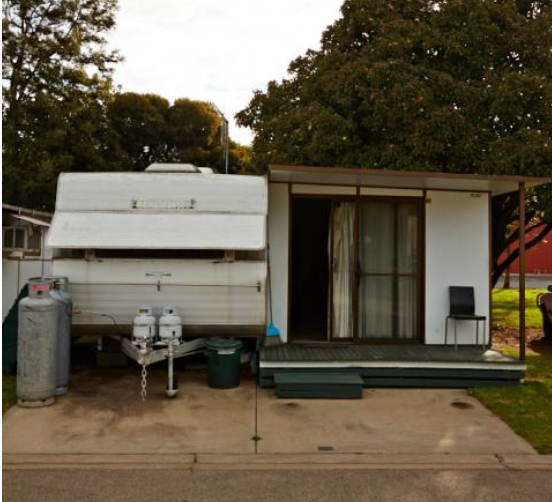Ryan Dinse, Editor of Money Morning, has penned an article entitled “Could Tiny Homes Be the Future of Australian Housing?”, which presents “tiny homes” as a worthy replacement for the Great Australian Dream of owning a detached house on a traditional block of land:
In the wake of home ownership plummeting and savvy innovators dreaming up new living solutions, there is now actually another way…
And it could very well be the way of the future… You may have heard of tiny homes, and thought, ‘never in a million years…’. But for some, these little abodes can be surprisingly stylish and liveable…
In fact, for many…going smaller actually means living larger.
With a more minimalist outlook on material consumption, people begin to focus less on what they covet and more on what genuinely fills their happiness cup.
Tiny homes can often be carted around on wheels on the back of cars or in trailers, letting residents travel and see their country, and move around with greater mobility…
Because it seems tiny living isn’t at all a downgrade. It’s an upgrade to a new way of life…
In my view, tiny homes aren’t simply a passing trend (though they are very trendy, right now). They’re a natural progression to more compact living solutions, just like we’ve seen in Europe and Japan over the decades.
Spare me. There’s a reason that most tiny homes “can often be carted around on wheels on the back of cars or in trailers”. That is because tiny homes are little more than caravans. Except they have been rebranded to make them sound trendy and to remove the stigma of poverty that surrounds people living in caravans.

Let’s remember that Australia’s cities and towns are already dotted with long-term caravan parks. These typically house vulnerable people that cannot afford to live in a traditional house or apartment, and are generally one rung above homelessness.
Do we really want caravan park living to become mainstream, and for future Australian families to be raised in caravans? Because that is what the author is really suggesting.
Ultimately, tiny homes are the type of housing gimmick that you get when policymakers and commentators are too lazy to address the true causes of unaffordable housing and homelessness. You know, fundamental issues like:
- Lowering immigration back to historical levels;
- Property tax reforms (e.g. curbing negative gearing and capital gains tax concessions, and replacing stamp duties with a broad-based land values tax);
- Removing artificial restrictions on land supply;
- Building more public housing; and
- Making rental tenancy laws more secure and stable.
These are genuine ‘housing affordability’ solutions that would improve the lot of future Australians. And they don’t involve forcing people to live in cramped poverty in what are effectively caravans.

